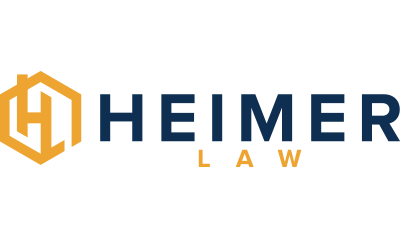As you begin the adoption process, you will need to make a profile or portfolio — or both. While they may seem similar, each serves a distinct purpose in presenting prospective adoptive parents to birth parents, and understanding the difference between the two is essential. Either a profile or portfolio allow would-be adoptive parents to showcase their lives, personalities, and readiness to adopt, but they vary in format, function, and depth.
Adoption Portfolio: A comprehensive representation
An adoption portfolio is typically a more detailed, visual presentation of the adopting parents. It is a creative, multi-page collection that provides a comprehensive look at the couple or individual hoping to adopt. It can be a photo album, an e-book, or even a hardcover or spiral-bound book.
The portfolio usually includes:
- Personal Background: Detailed information about the adoptive parents’ upbringing, education, career, family life, and interests.
- Pictures: A visual component is key. Photographs are often used to show the family’s home, lifestyle, pets, vacations, hobbies, and social events. These help convey a warm, inviting atmosphere, illustrating a comfortable, stable home environment.
- Lifestyle and Interests: A portfolio often includes sections that describe how the parents spend their free time, their values, community involvement, and any hobbies they engage in as a couple or as a family.
- References and Testimonials: Some portfolios might include statements from family members, friends, or colleagues who can speak to the character and suitability of the adoptive parents.
The goal of the portfolio is to provide a holistic picture of the adoptive parents. It combines elements of personal narrative with visual storytelling, often going into greater depth than a profile would. The adoptive parents may include specific reasons for wanting to adopt and what they hope for in an open or closed adoption process. It is typically designed to appeal to the emotional side of the adoption journey, helping birth parents connect with the adopting parents on a personal level.
Adoption Profile: A concise introduction
An adoption profile, on the other hand, is typically shorter, more concise, and more focused on the basics of the adoptive parents’ lives. It is a snapshot, often presented as a one-page document or a web page.
The profile includes:
- Basic Information: A profile includes essential details like the parents’ names, ages, professions, and location.
- Reasons for Adoption: The profile highlights why the parents are pursuing adoption, often including statements about their desire to create or expand a family through adoption.
- Family Dynamics: A brief overview of the family unit, including any other children (biological or adopted), pets, or extended family.
- Adoption Preferences: The profile may address specific preferences the adoptive parents have in terms of the type of adoption they are open to, such as age range, gender, or special needs of the child.
A profile is typically more structured and formal in tone, acting as an introduction to the adopting parents. It is designed to provide the most important information in a straightforward manner, appealing to potential birth parents or adoption agencies who are looking for a quick overview. It may not delve as deeply into the adopting parents’ lives or offer as much visual representation, but it still provides the critical information needed to make an informed decision.
Advantages of a portfolio
A portfolio allows prospective adoptive parents to go into depth about their lives, values, and personality, offering birth parents a fuller understanding of who they are. The inclusion of photographs and other visual elements makes the portfolio engaging and can help make a connection on a more personal, emotional level. Portfolios are often more flexible, allowing adoptive parents to creatively present their story in a way that resonates with their personality and unique journey.
The comprehensive nature of a portfolio can help build trust and credibility, as it shows a willingness to open up and share intimate aspects of life. In Arkansas adoptions, birth mothers get to choose the family they prefer for their babies. Lots of rich detail makes it easier for a mom or an expectant mom to imagine her child in their new family.
Advantages of a profile
The shorter format of a profile means that prospective adoptive parents can present the key facts quickly, making it ideal for situations where birth parents need to sift through a large number of potential adoptive families. It can also be better for an online introduction or inclusion in a gallery of potential adoptive families.
Profiles can streamline the process by cutting out extraneous details. This ensures that the most essential information is easily accessible, allowing for quicker decision-making. A profile is often simpler to update and easier to create, making it a more practical option for those just beginning the adoption process. For some parents, creating a simple profile may feel less daunting than compiling a full portfolio, especially if they’re unsure of how to creatively present their lives.
Profile or portfolio?
While either a profile or portfolio can be used to introduce prospective adoptive parents to adoption agencies or birth parents, the key difference lies in the depth and breadth of information provided. A portfolio offers a comprehensive, visually engaging picture of a family’s life, while a profile is a succinct overview that delivers the essential facts. The choice between the two depends on the specific needs of the adoption process, the adopting parents’ comfort with presenting personal information, and the type of connection they want to establish with birth parents. Each has its own advantages, and many adoptive parents may ultimately choose to create both a portfolio and a profile to maximize their chances of success in the adoption process.

